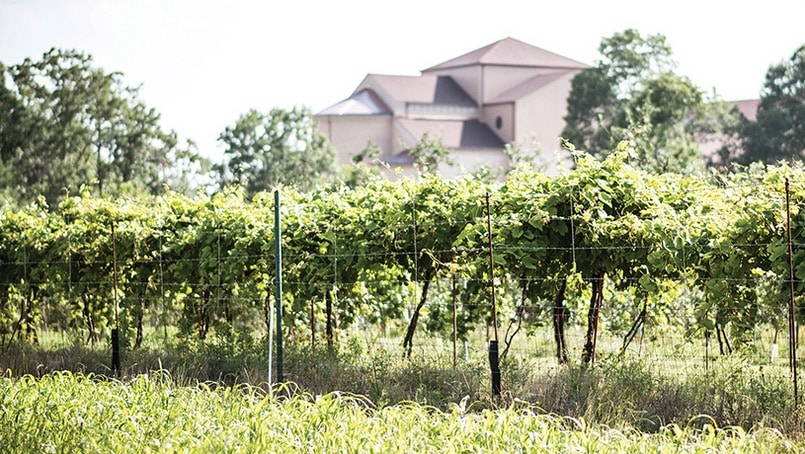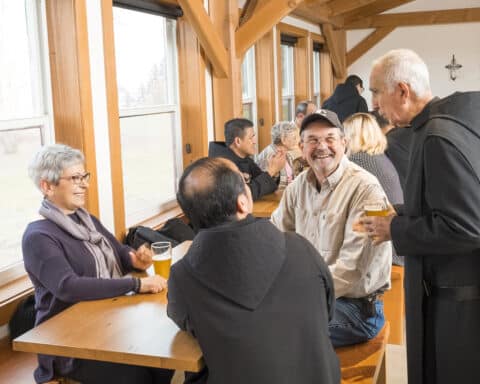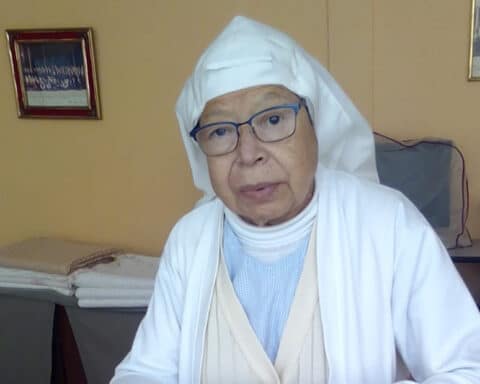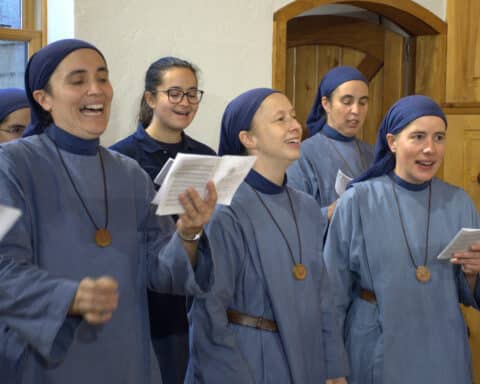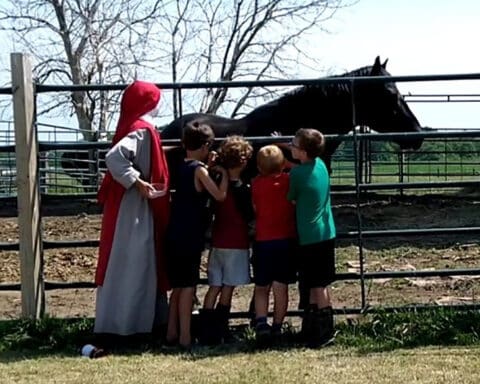The Benedictine monks of Our Lady of Clear Creek Abbey in eastern Oklahoma will soon mark the 20th anniversary of their founding. The community lives on a remote, 1,000-acre wooded site in the Diocese of Tulsa and has prayer as its chief apostolate. As its website indicates, their community “is to be counted among the institutes entirely ordered towards contemplation. By virtue of their vocation, the monks devote themselves to God alone in silence and solitude, in constant prayer, and willing penance.”
The monks live a challenging life, working and praying for long hours each day while sacrificing many of the comforts of modern life. However, as they draw near the 20th anniversary of their founding, the abbey continues to draw vocations. In 1999, there were 13 founding monks; today there are 52. Additionally, construction of the abbey’s buildings is well underway, according to Abbot Philip Anderson, as the monks are seeking to build “a beautiful monastery for God that will last 1,000 years.”
‘Great Books’ program
The abbey got its start from a “Great Books” program at the University of Kansas, which offered students an introduction to the classic works of Western literature. Father Abbot Anderson was among them. He came from an agnostic background, and the class sparked his conversion to Catholicism.
“I was part of the youth and music culture of the ’60s and ’70s,” Father Abbot recalled. “We were very enthusiastic about what we believed, but also confused. We were not finding spiritual values that led anywhere.”
After his conversion, Father Abbot joined with some of his fellow students seeking to live out their faith as monks, but they found that there was a “revolution” going on in religious life with many religious leaving their communities. He said, “We wanted to go to a traditional monastery, where there was a settled routine to life, and no revolution.”
They received training in monastic life with a traditional community in France before returning to the U.S. to found the new abbey. Father Abbot observed, “We were formed in a different pattern than other Benedictine communities. Ours was to be a contemplative life without an added apostolic work, like teaching.”
The abbey was established in the Diocese of Tulsa; its first buildings included a large log cabin, a barn and stable where the previous owners had once kept saddle horses. The horse stalls became monastic cells and the barn the first chapel.
Three 8s
The life of a monk at Clear Creek Abbey, Father Abbot said, can be simplified to a balance of the “three 8s”: eight hours of daily prayer, eight hours of work and eight hours of rest. Their day follows a set schedule beginning at 4:50 a.m. and ending at 9 p.m., in conformity with the Benedictine motto of Ora et Labora, prayer and work. Additionally, the monks pray in Latin and offer Mass in the Extraordinary Form because, Father Abbot explained, “Many of our seminarians and young priests have an interest in this form of the Mass, and we find it a more contemplative form of prayer better suited to our lives as monks.”
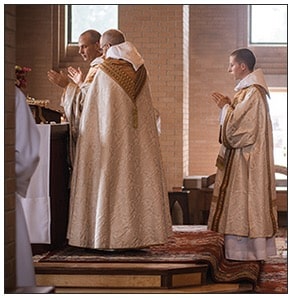
There are two groups of monks: choir monks and brothers. The choir monks are priests or those working towards ordination who spend more time in study; the brothers do not receive Holy Orders and spend more time in manual labor. Visitors to the abbey will see the monks laboring at many tasks, including working in the kitchen, woodshop or with farm animals.
The sacrifices the monks are asked to make are many. Father Abbot said, “The biggest sacrifice we make is marriage and family. But, the physical endurance required can be hard, too, as we work in a tough climate — it can get hot and humid here — with many ticks, snakes, spiders and scorpions around. We also fast frequently.”
Father Andrew joined the community in 2006 and was ordained a priest in 2014. His duties range from teaching the novices liturgy and monastic history, to overseeing the chopping down and planting of trees. He is happy at the abbey and “wouldn’t give it up for anything in the world.” It was an advantage that he came to the life at age 22, he said, “when you’re up for anything. People who come in their 30s can have a more difficult time, not just with the schedule, but with living under obedience.”
Among the biggest challenges for the monk living in community, Father Andrew believes, is “daily giving up your own will. St. Benedict wanted men to live in groups in constant contact with one another, forcing them to exercise patience and charity. It acts like sandpaper, wearing away rough edges and making you more conformed to Christ.”
Visitors welcome
Although the monks do not serve at parishes, visitors are welcome to participate in the monks’ Masses and prayers. In fact, some lay people, including Cristina Borges, have built homes nearby the abbey so that they may daily take part in the monks’ life of prayer.
She said, “I found it was so peaceful, it was heartbreaking when I had to leave.” She and her family moved alongside the abbey, and now she visits daily for Mass. “I like the traditional liturgy, the concentration on prayer and contemplation, the Gregorian chant and the commitment you see in the monks.”
The family of Janine Johnson also bought land alongside the abbey and built a house so they could daily take part in the monks’ life of prayer. She and her three teenage daughters attend one of the low Masses offered early in the morning; she returns in the evening for Vespers. She said, “It has had a huge spiritual impact on our lives. It has helped us in our knowledge of the faith, and our spiritual lives as well.”
Johnson’s husband went to school with the founders of the abbey and today works as a farmer in Kansas. He joins the family intermittently during the year, as there is little work in the remote area. Having the family live apart has been a sacrifice, but it’s worth it, Johnson believes, because “we haven’t been able to find anywhere else what we have here at the abbey.”
Josh Martin is originally from the Dallas area and moved nearby the abbey so he could raise his seven children in a Catholic environment. The monks celebrate a “beautiful liturgy,” he said, which has had “a profound formative effect on my children.”
He’s also done some construction work for the abbey and has been inspired by the high quality of men he sees entering the community. He said, “They’re young, smart men, with a good spirit and a great attitude. They are a real source of hope for the future of the Church.”
Father Abbot said that about a third of the abbey construction was complete, but they expected it would take millions of dollars and many years to finish construction. Current projects include finishing the church and building additional housing. Fifteen of the monks, he said, were living in what amounted to a tool shed, and while it was good for monks to live in poverty, “it would be better to have real cells.”

